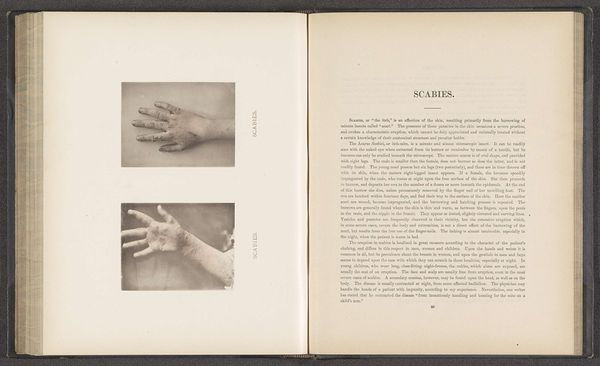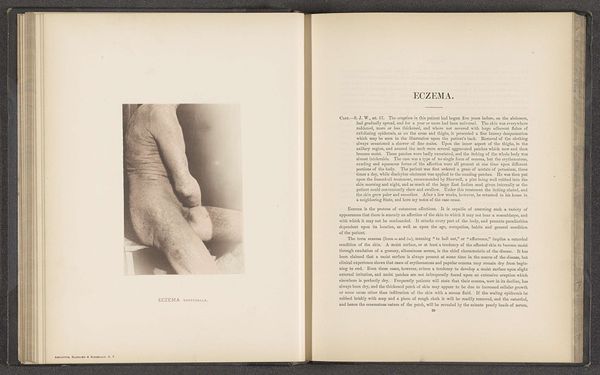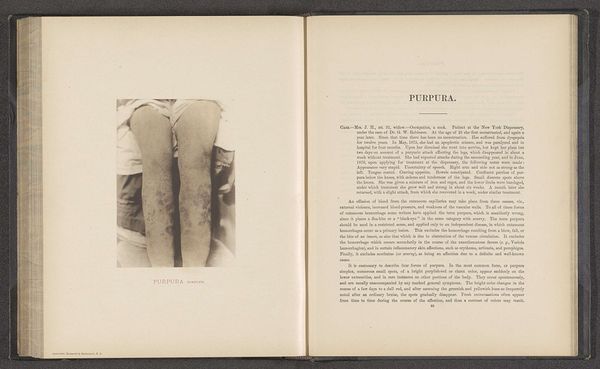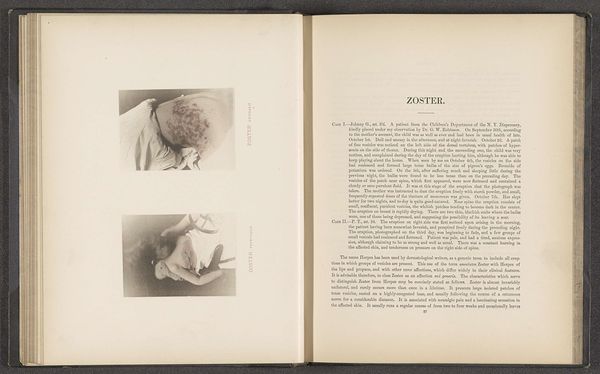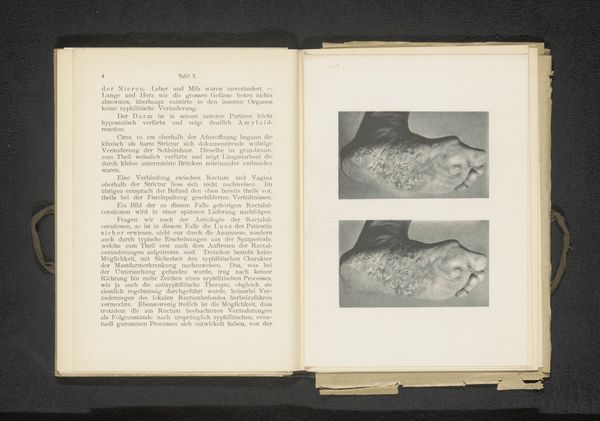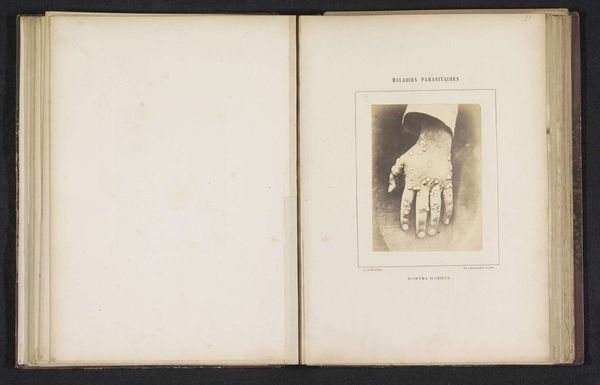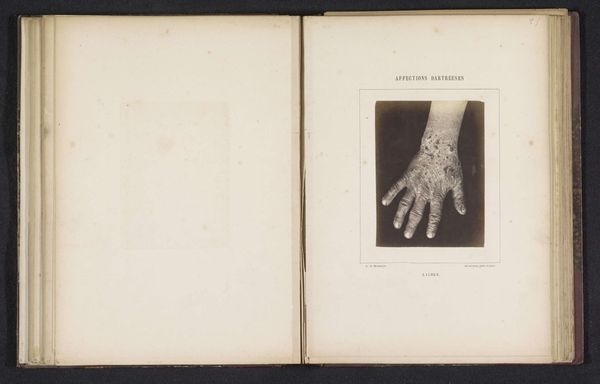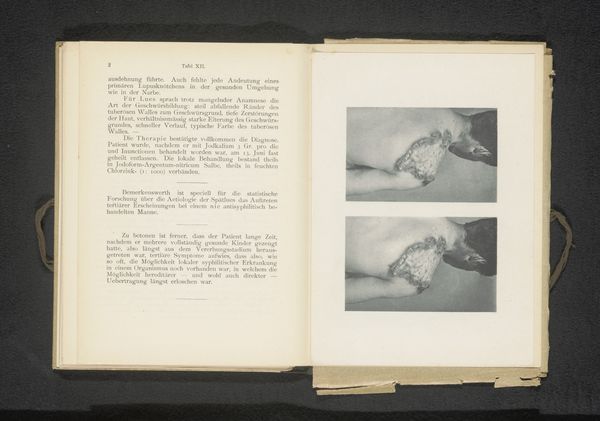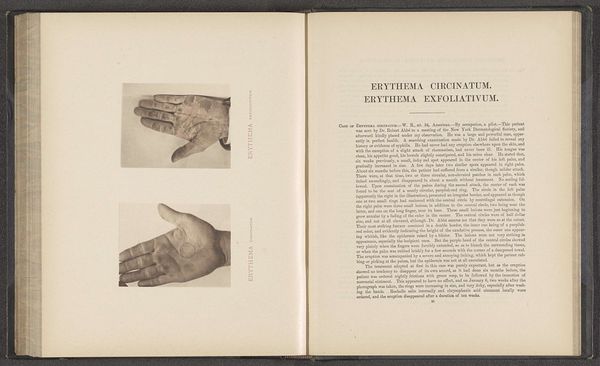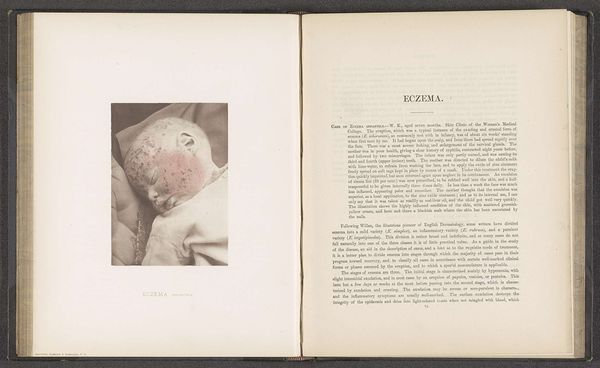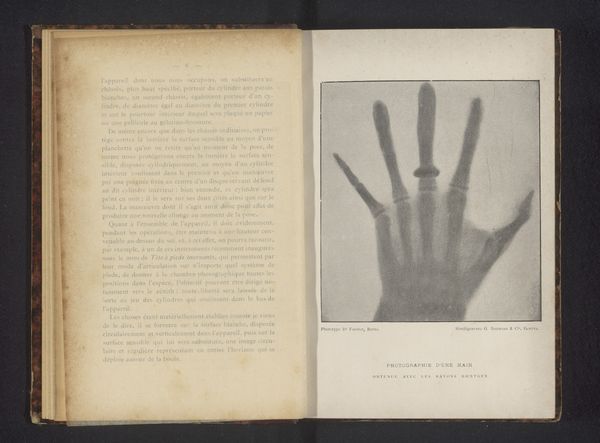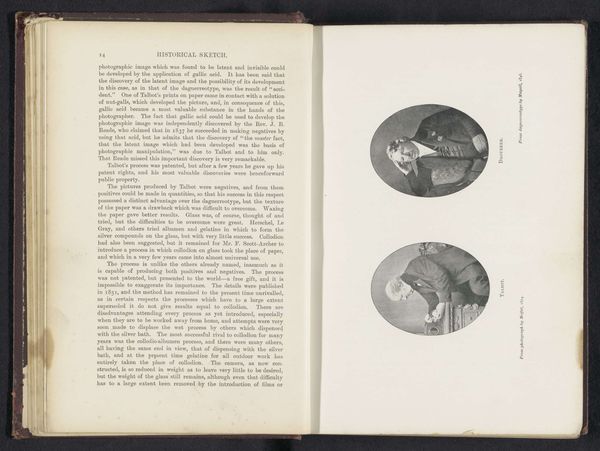
photography, gelatin-silver-print
#
portrait
#
photography
#
gelatin-silver-print
#
realism
#
arm
Dimensions: height 145 mm, width 102 mm
Copyright: Rijks Museum: Open Domain
Curator: Hello! Editor: Thanks for meeting me. So, this gelatin-silver print is called "Patient suffering from the skin disease 'eczema squamosum,'" created before 1881 by an anonymous photographer. It’s…striking. I’m curious, what emotional or historical echoes do you find in this image? Curator: Well, at first glance, the visual absence—anonymity in authorship and the focus on illness rather than identity—speaks volumes. Consider the shift in how we depict the body: in earlier times, disease was often interpreted as divine punishment or a symbolic failing. Does this image challenge or reinforce those notions? Editor: Hmmm, I see what you mean, how medical photography in the 19th century documented disease without really acknowledging the person experiencing it. So how does this specific visual language shape our understanding? Curator: Precisely! Notice the meticulous focus on the affected area, framed within the detached gaze of medical documentation. But there's more—this imagery shares visual DNA with religious iconography of suffering, think Saint Sebastian pierced by arrows. The presentation, although clinical, inevitably evokes compassion, drawing from a deep well of cultural empathy associated with human suffering. Can you see the potential for a layered emotional response? Editor: Yes, it's that tension between clinical detachment and inherent empathy that makes it so compelling. The disease almost becomes a symbol itself, right? Curator: Exactly. The image prompts reflections on fragility, mortality, and our historical relationship with illness. The eczema transforms into a potent symbol loaded with historical connotations. It’s fascinating how photography, initially meant to objectify, can uncover deeper cultural narratives of pain and resilience. Editor: That makes so much sense! I initially just saw the stark image of the skin, but now I see how it’s tied to a whole history of cultural and symbolic understanding. Thanks for illuminating that!
Comments
No comments
Be the first to comment and join the conversation on the ultimate creative platform.
